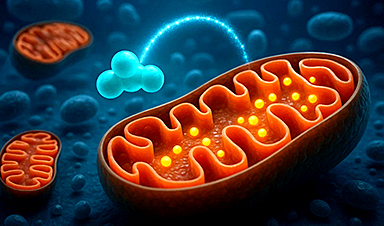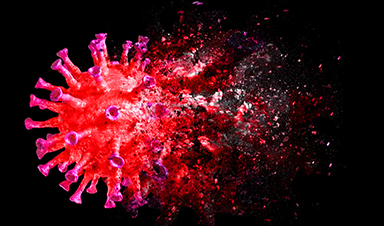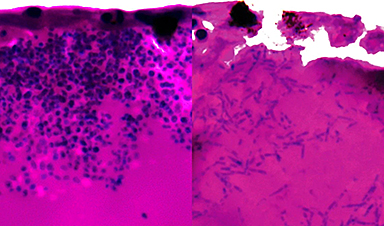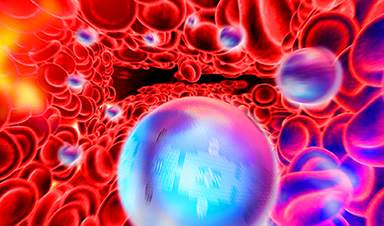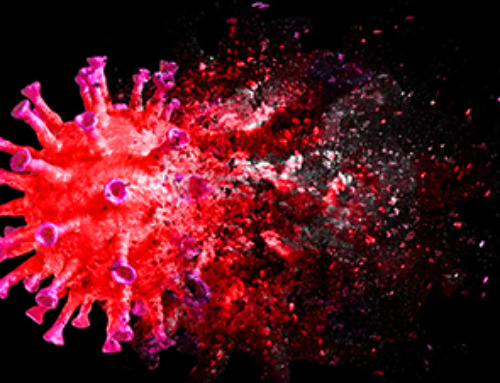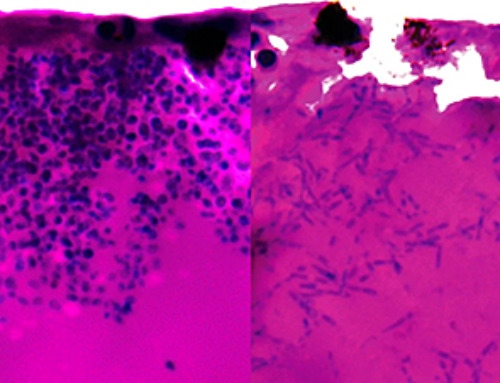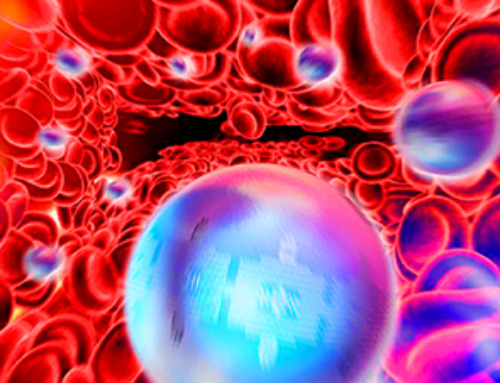After more than five decades of mystery, scientists have finally unveiled the detailed structure and function of a long-theorized molecular machine in our mitochondria — the mitochondrial pyruvate carrier.
This microscopic gatekeeper controls how cells fuel themselves by transporting pyruvate, a key energy source, across mitochondrial membranes. Now visualized using cryo-electron microscopy, the carrier's lock-like mechanism could be the key to tackling diseases like cancer, diabetes, and even hair loss. By blocking or modifying this gateway, researchers believe we could reroute how cells generate energy and develop powerful, targeted treatments.
Unlocking a Mitochondrial Mystery
After more than 50 years, scientists have finally uncovered how a tiny molecular machine inside our cells helps turn sugar into energy, a process essential for life.
Researchers at the Medical Research Council (MRC) Mitochondrial Biology Unit at the University of Cambridge have revealed the structure of this machine, which works like a canal lock to move a molecule called pyruvate into the mitochondria — the parts of our cells often called the "powerhouses." Pyruvate is produced when our bodies break down sugars, and it plays a key role in energy production.
Visualizing the Invisible
This machine, known as the mitochondrial pyruvate carrier, was first proposed in 1971. But only now have scientists been able to visualize it at the atomic level, using a powerful imaging technique called cryo-electron microscopy, which magnifies structures up to 165,000 times their size. The findings appear today (April 18) in Science Advances.
Dr. Sotiria Tavoulari, Senior Research Associate at the University of Cambridge, who helped identify the components of the carrier, explained: "Sugars in our diet provide energy for our bodies to function. When they are broken down inside our cells they produce pyruvate, but to get the most out of this molecule, it needs to be transferred inside the cell's powerhouses, the mitochondria. There, it helps increase 15-fold the energy produced in the form of the cellular fuel ATP."
Revealing the Transport Mechanism
Maximilian Sichrovsky, a PhD student at Hughes Hall and joint first author of the study, said: "Getting pyruvate into our mitochondria sounds straightforward, but until now we haven't been able to understand the mechanism of how this process occurs. Using state-of-the-art cryo-electron microscopy, we've been able to show not only what this transporter looks like, but exactly how it works. It's an extremely important process, and understanding it could lead to new treatments for a range of different conditions."
Molecular Locks and Canal Gates
Mitochondria are surrounded by two membranes. The outer one is porous, and pyruvate can easily pass through, but the inner membrane is impermeable to pyruvate. To transport pyruvate into the mitochondrion, first an outer 'gate' of the carrier opens, allowing pyruvate to enter the carrier. This gate then closes, and the inner gate opens, allowing the molecule to pass through into the mitochondrion.
"It works like the locks on a canal but on the molecular scale," said Professor Edmund Kunji from the MRC Mitochondrial Biology Unit, and a Fellow at Trinity Hall, Cambridge. "There, a gate opens at one end, allowing the boat to enter. It then closes, and the gate at the opposite end opens to allow the boat smooth transit through."
A New Drug Target Emerges
Because of its central role in controlling the way mitochondria operate to produce energy, this carrier is now recognised as a promising drug target for a range of conditions, including diabetes, fatty liver disease, Parkinson's disease, specific cancers, and even hair loss.
Pyruvate is not the only energy source available to us. Our cells can also take their energy from fats stored in the body or from amino acids in proteins. Blocking the pyruvate carrier would force the body to look elsewhere for its fuel – creating opportunities to treat a number of diseases. In fatty liver disease, for example, blocking access to pyruvate entry into mitochondria could encourage the body to use potentially dangerous fat that has been stored in liver cells.
Starving Cancer and Stimulating Hair Growth
Likewise, there are certain tumour cells that rely on pyruvate metabolism, such as in some types of prostate cancer. These cancers tend to be very 'hungry', producing excess pyruvate transport carriers to ensure they can feed more. Blocking the carrier could then starve these cancer cells of the energy they need to survive, killing them.
Previous studies have also suggested that inhibiting the mitochondrial pyruvate carrier may reverse hair loss. Activation of human follicle cells, which are responsible for hair growth, relies on metabolism and, in particular, the generation of lactate. When the mitochondrial pyruvate carrier is blocked from entering the mitochondria in these cells, it is instead converted to lactate.
Drug Design Gets a Molecular Blueprint
Professor Kunji said: "Drugs inhibiting the function of the carrier can remodel how mitochondria work, which can be beneficial in certain conditions. Electron microscopy allows us to visualize exactly how these drugs bind inside the carrier to jam it – a spanner in the works, you could say. This creates new opportunities for structure-based drug design in order to develop better, more targeted drugs. This will be a real game changer."
Reference: "Molecular basis of pyruvate transport and inhibition of the human mitochondrial pyruvate carrier" by Sichrovsky, M, Lacabanne, D, Ruprecht, JJ & Rana, JJ et al., 18 April 2025, Science Advances.
DOI: 10.1126/sciadv.adw1489
The research was supported by the Medical Research Council and was a collaboration with the groups of Professors Vanessa Leone at the Medical College of Wisconsin, Lucy Forrest at the National Institutes of Health, and Jan Steyaert at the Free University of Brussels.
News
AI Helped Scientists Stop a Virus With One Tiny Change
Using AI, researchers identified one tiny molecular interaction that viruses need to infect cells. Disrupting it stopped the virus before infection could begin. Washington State University scientists have uncovered a method to interfere with a key [...]
Deadly Hospital Fungus May Finally Have a Weakness
A deadly, drug-resistant hospital fungus may finally have a weakness—and scientists think they’ve found it. Researchers have identified a genetic process that could open the door to new treatments for a dangerous fungal infection [...]
Fever-Proof Bird Flu Variant Could Fuel the Next Pandemic
Bird flu viruses present a significant risk to humans because they can continue replicating at temperatures higher than a typical fever. Fever is one of the body’s main tools for slowing or stopping viral [...]
What could the future of nanoscience look like?
Society has a lot to thank for nanoscience. From improved health monitoring to reducing the size of electronics, scientists’ ability to delve deeper and better understand chemistry at the nanoscale has opened up numerous [...]
Scientists Melt Cancer’s Hidden “Power Hubs” and Stop Tumor Growth
Researchers discovered that in a rare kidney cancer, RNA builds droplet-like hubs that act as growth control centers inside tumor cells. By engineering a molecular switch to dissolve these hubs, they were able to halt cancer [...]
Platelet-inspired nanoparticles could improve treatment of inflammatory diseases
Scientists have developed platelet-inspired nanoparticles that deliver anti-inflammatory drugs directly to brain-computer interface implants, doubling their effectiveness. Scientists have found a way to improve the performance of brain-computer interface (BCI) electrodes by delivering anti-inflammatory drugs directly [...]
After 150 years, a new chapter in cancer therapy is finally beginning
For decades, researchers have been looking for ways to destroy cancer cells in a targeted manner without further weakening the body. But for many patients whose immune system is severely impaired by chemotherapy or radiation, [...]
Older chemical libraries show promise for fighting resistant strains of COVID-19 virus
SARS‑CoV‑2, the virus that causes COVID-19, continues to mutate, with some newer strains becoming less responsive to current antiviral treatments like Paxlovid. Now, University of California San Diego scientists and an international team of [...]
Lower doses of immunotherapy for skin cancer give better results, study suggests
According to a new study, lower doses of approved immunotherapy for malignant melanoma can give better results against tumors, while reducing side effects. This is reported by researchers at Karolinska Institutet in the Journal of the National [...]
Researchers highlight five pathways through which microplastics can harm the brain
Microplastics could be fueling neurodegenerative diseases like Alzheimer's and Parkinson's, with a new study highlighting five ways microplastics can trigger inflammation and damage in the brain. More than 57 million people live with dementia, [...]
Tiny Metal Nanodots Obliterate Cancer Cells While Largely Sparing Healthy Tissue
Scientists have developed tiny metal-oxide particles that push cancer cells past their stress limits while sparing healthy tissue. An international team led by RMIT University has developed tiny particles called nanodots, crafted from a metallic compound, [...]
Gold Nanoclusters Could Supercharge Quantum Computers
Researchers found that gold “super atoms” can behave like the atoms in top-tier quantum systems—only far easier to scale. These tiny clusters can be customized at the molecular level, offering a powerful, tunable foundation [...]
A single shot of HPV vaccine may be enough to fight cervical cancer, study finds
WASHINGTON -- A single HPV vaccination appears just as effective as two doses at preventing the viral infection that causes cervical cancer, researchers reported Wednesday. HPV, or human papillomavirus, is very common and spread [...]
New technique overcomes technological barrier in 3D brain imaging
Scientists at the Swiss Light Source SLS have succeeded in mapping a piece of brain tissue in 3D at unprecedented resolution using X-rays, non-destructively. The breakthrough overcomes a long-standing technological barrier that had limited [...]
Scientists Uncover Hidden Blood Pattern in Long COVID
Researchers found persistent microclot and NET structures in Long COVID blood that may explain long-lasting symptoms. Researchers examining Long COVID have identified a structural connection between circulating microclots and neutrophil extracellular traps (NETs). The [...]
This Cellular Trick Helps Cancer Spread, but Could Also Stop It
Groups of normal cbiells can sense far into their surroundings, helping explain cancer cell migration. Understanding this ability could lead to new ways to limit tumor spread. The tale of the princess and the [...]
